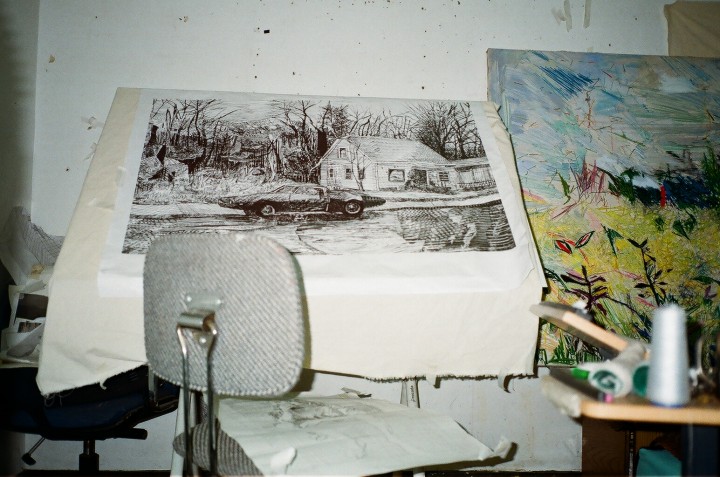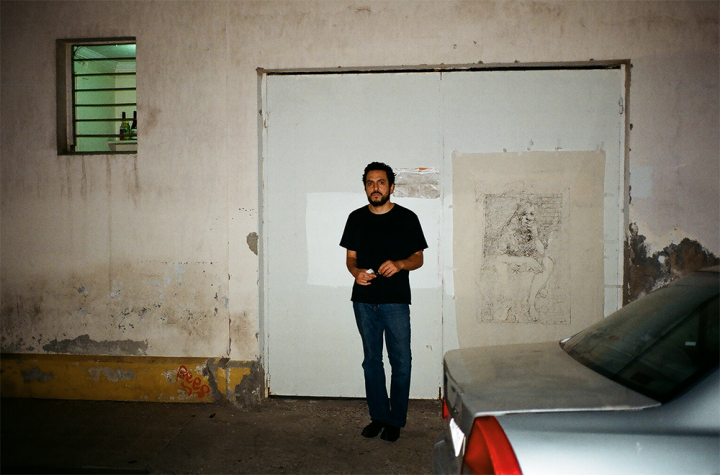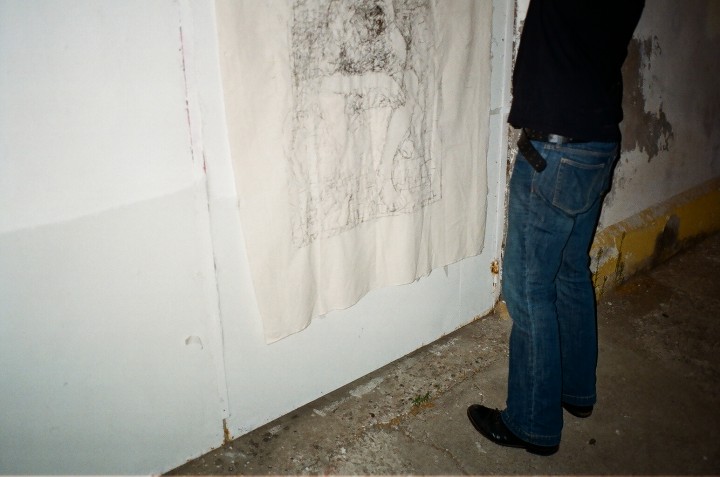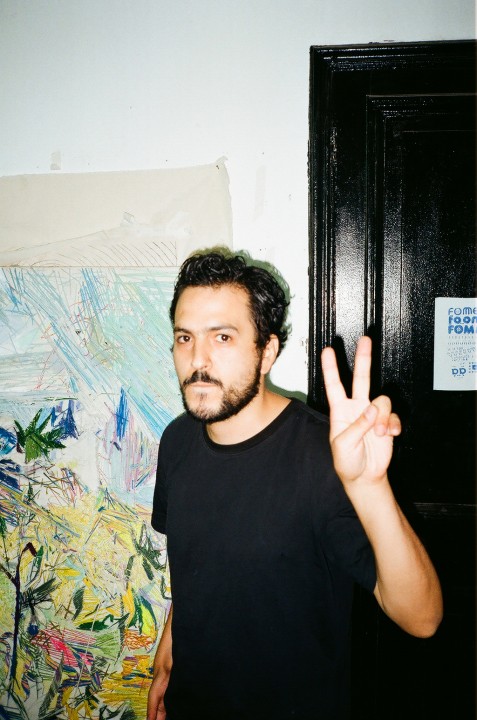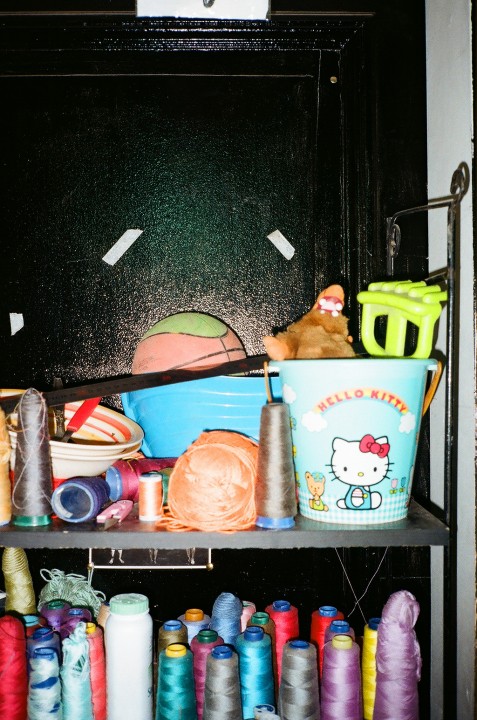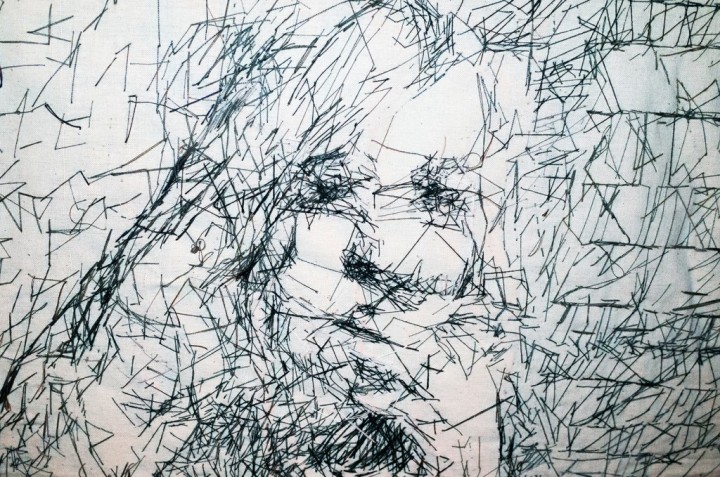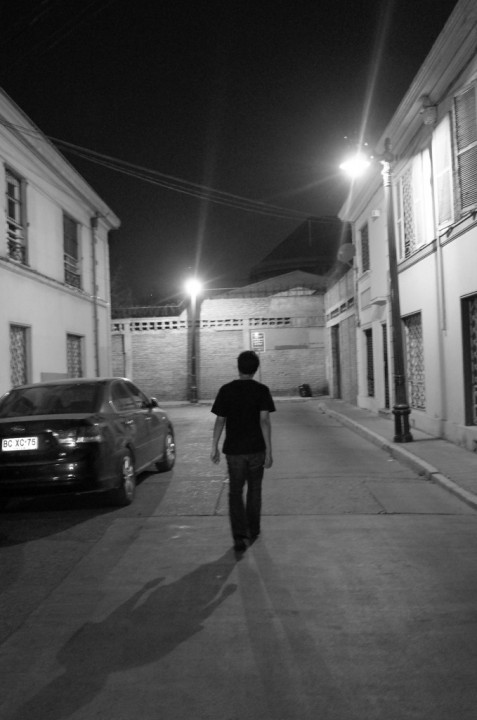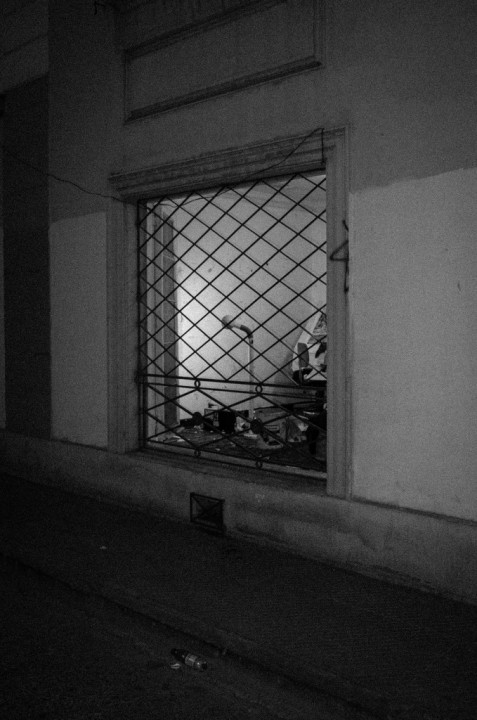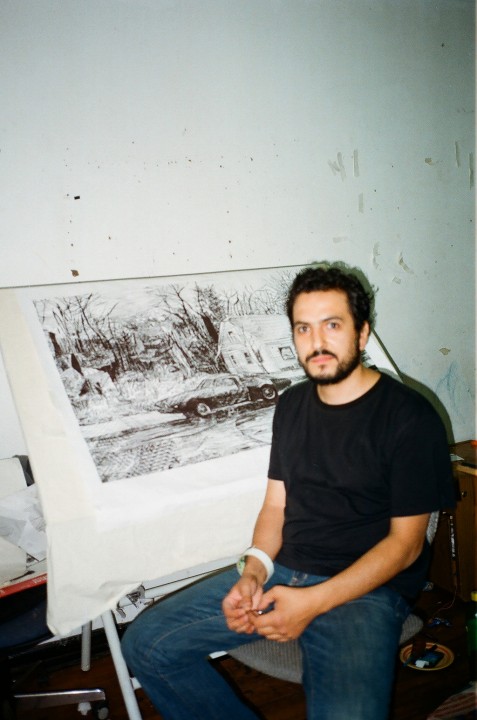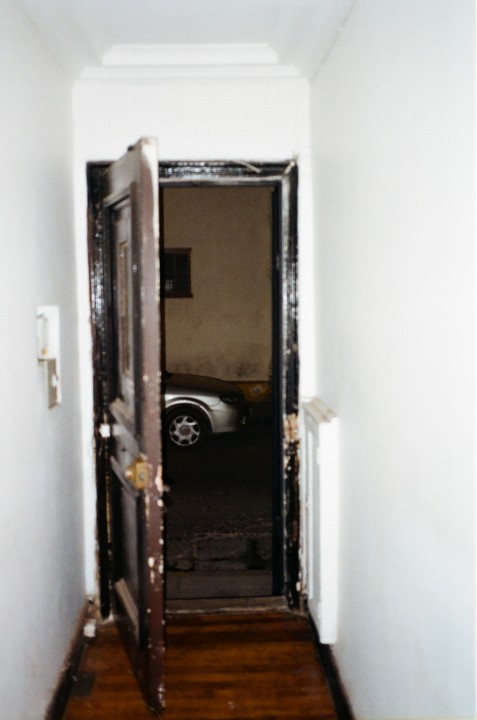Victor Espinoza’s work is recognized by its technique, embroidery. Hatched threads that weren’t always there. They come from other places and the trace is inspired on music and films, besides the auto-imaging obsession. Here is a sample in words and images of his imagery and work process.
Text & interview: Carolina Martínez Sánchez | Images: Emilio Marín | Translation: Ana Rosa Ibañez
Embroider just as if you were doing it with a pencil, images reproduced in abstraction. Victor Espinoza, visual artist, brings timeless images to the fabric, translated by his hatched threads.
Cutout Cubism
During his first stage, Victor used to confection collages of different dimensions, which mixed cubist’s aesthetic influence with images of women taken from magazines.
“I did that because it was there, it was what came at that moment. Fashion was very in fashion. That stage was only a study though. My work is what I do now.”
After leaving that body of work as just an object of study, a transition was necessary. A change was needed in order to leave the experimentation behind, and that came in the shape of a friend asking him to make a drawing on top of a T-shirt. Drawing with his bic pen didn’t seem like the best option, with its tip opposing to the material on which he needed to create. He needed a way to work that related to the fabric, and embroidery appeared as the best option.
This casual transition didn’t happen with the materials that the artist used to make use of at the time; so the imagery where he took his referents and mental images mutated also.
The fashion that Victor referred to appeared to be out of fashion, so it’s the obsession with his current self-image the one that he refers to in his latest work.
Of floating images, their transit and construction
Victor’s own image is not what inspires him. It is the construction of an autobiography through social network, Facebook in particular. This construction is what has been delivering material for an album that keeps his work up to date.
People put images in the interface at any moment, starting a swarm inside the net, where nobody owns the limits. The image is transformed in an intangible – millions of them – and at some point it reaches Victor’s visual archive.
“Everyone has a Facebook page and are constantly re-designing it. You can re-design your image through this media, taking selfies, speaking out in first or third person. It’s very in-fashion, everything is very over-exposed.”

The over-exposition of the image lets the artist take them without permission:
“I don’t borrow them, I steal them.”
Images as virtual manifestations of autobiographies, losing sense in a circulating environment that doesn’t allow proper contextualization of each one. It not possible to make them tangible, being lost in a spiral of imagined transit on the web. But you appropriate them through a new materiality; you give them a new narrative.
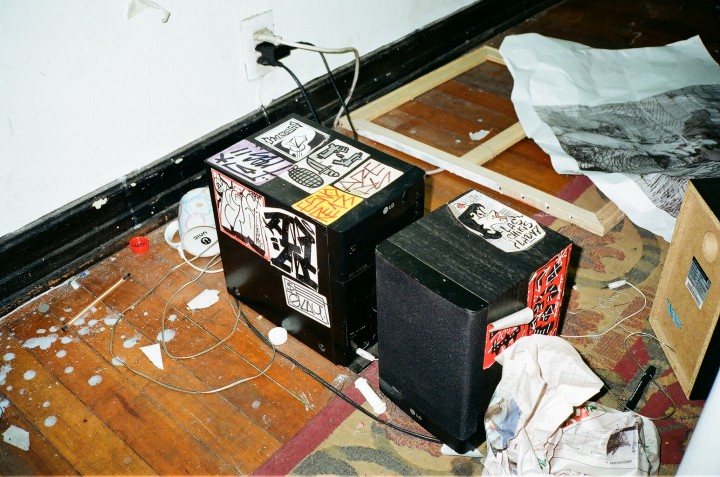
“For me this is very comfortable, the images pass in front of me all the time, they reach me.”
Instant replicas
Inescapably, the reproduction takes reality to abstraction, which is given in a certain moment. Victor conceptualizes such moment and brings it to the materiality that reconverts to a possible original meaning.
“ I’m interested in the intrinsic power of image, or how you abstract yourself from it, meaning like a double abstraction of reality. There are some more organic pieces where I play with the idea of landscape, this way I experiment with the idea of conceptualizing the reality in an unreal manner. Taking it to materiality, things start coming up. My work can be very figurative, like a stain or a texture, I’m interested in trying different formats.”
For Victor, this imagined reproduction of reality is not meant to assign anything ethical to his production. His work is characterized by being a constant doing, and a permanent aesthetic exercise that looks to impress the spectator in the way in which they appreciate it. His doesn’t mean to interfere with a message for interpretation. All the pieces come from an image that he encounters and are translated into embroidery. This way, Victor’s method is given by a continuous production.
Of wagon’s sounds and theatre as film
Music is essential to stand so many hours with a needle at hand, action that rules the days of Victor’s constant embroidering. He confesses that he cannot work without it, though when it comes to producing he doesn’t have a personal soundtrack, he just chooses any album of his favourite artists, repeating them in a loop.
One of his favourite artists is Burial, who in the eyes of Victor, plays with the ambiguity in his referents and in the sonorous look. The musician’s homonym album was his soul companionship for the process of the piece prepared for 2011’s “Comunidad Concreta” held in the Concreta Gallery in Matucana 100.
“I did all this process listening to that album, I heard it over and over again. I usually listen to electronic music when I work; it sort of installs me in the automatic dynamic of my work, in a rather physical rhythm. But, reading further into it, I think this music works also for the structure of my work. Detroit’s techno is usually very pure, very transparent. But Burial, for instance, has a dark crossing of different influences that take me to create dirty textures; a perverse kind of dub step. I think my work also suffers from the same thing, being infected by the crossing of references, images and procedures.”
Burial’s sounds are capable of creating an atmosphere that carries the wagons of Berlin’s U-Bhan, where people play with the idea of making music. Once again, the idea of the abstraction of reality becomes an influence for Espinoza. These are simulated sounds that may be completely opposite, but when they meet they create this simulation of a reality’s environment.
The mismatches that occur in harmony are the ones that take an artist’s work to mutate. An exchange that allows perceptions to be fresh and surprising.
“I like artists to surprise me, let them do a piece and then something completely different; that’s what I Hope for my work too, for it to shift and move forward.”
Film is and essential part of Espinoza’s imaginary. Not just because he embroiders scenes from his fave movies, like he did with “Blow Up” (Antonioni, 1966); but rather because film’s own narrative is also a simulation, abstraction that becomes attractive when he has to create his projects.
He is fascinated by movies like “Opening Night” by John Casavettes (1977), where once again the inspiration is supported by the idea of simulation. The film registers a play from different perspectives: a spectator’s seat that’s very close to the stage and the actors, and another one behind them. This way, the construction of the story is given from different perspectives that can be interpreted as an option for whoever’s watching the film, or different levels of reality that converge in a net of stories.
Cronenberg is also an inspiration for Victor. The organic experience which one takes from his films –surfaces, movement and changes- is also what breaks the directives of a regular narrative, where the style’s code and aesthetic is taken somewhere else; which could be read as a TENDENCIOSO manipulation, talking about a perverse image. Once again, simulation appears in front of the eyes and perception of the artist.
The aesthetic holes that build up the story come as an ambiguity in the image and the meaning towards Victor is relating to. He is not a good friend to the figurative style, or realism; though he is looking to experience with painting in future projects, pervert patterns of classical styles, intervene them and mix the organic with the raw.
The innocence of the non-political image, the perversion of the stolen itinerant image, simulation and abstraction are the directives that characterize Victor’s work, but just like that floating image, his aesthetics are willing to mutate.
The neighbourhood, the street, the house, the squared window that looks up on the street, the fence. The studio, the room, the board, the trestles, the threads. The untidy hair, tidy hair, the way you walk, day, night, clothes, shoes with small heels. The look, the way you talk, time, fluorescent light, electronic music, the computer. Al of those things belong to each other and to Victor at the same time. A strong character, but fable, Victor appears and disappears. But he always comes back.

 Español
Español
